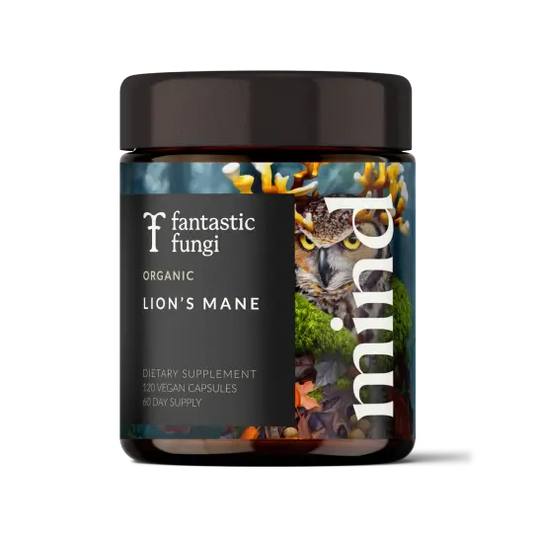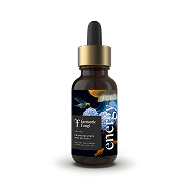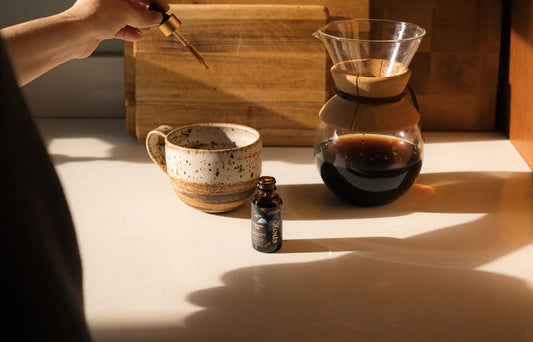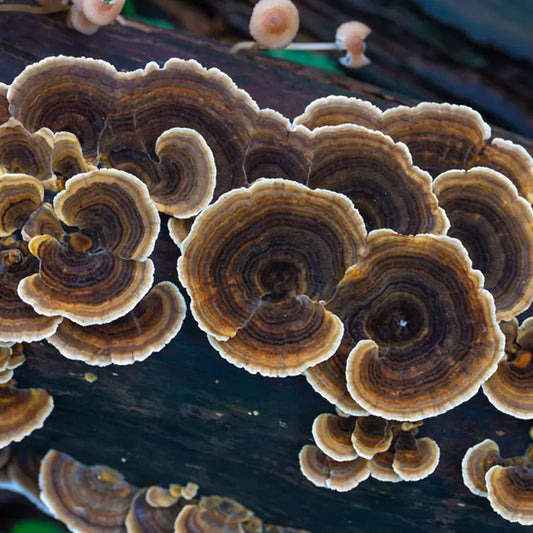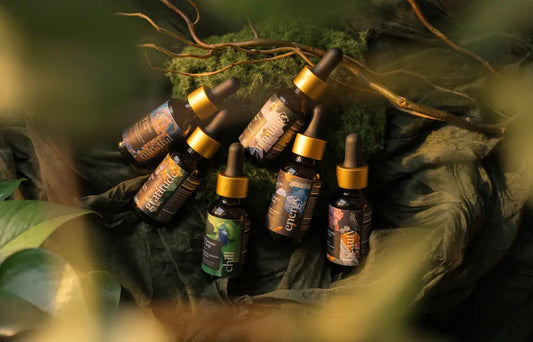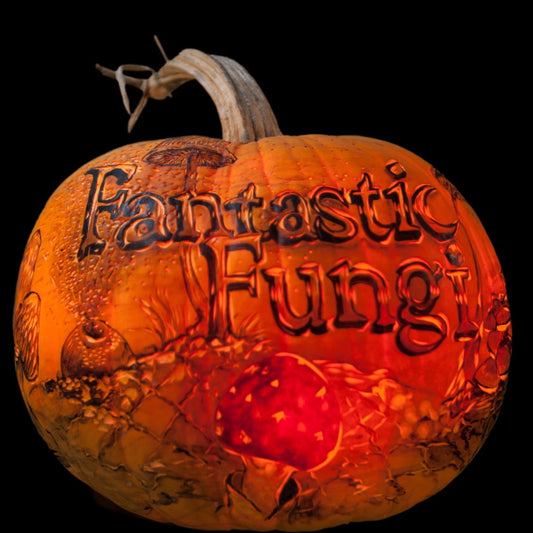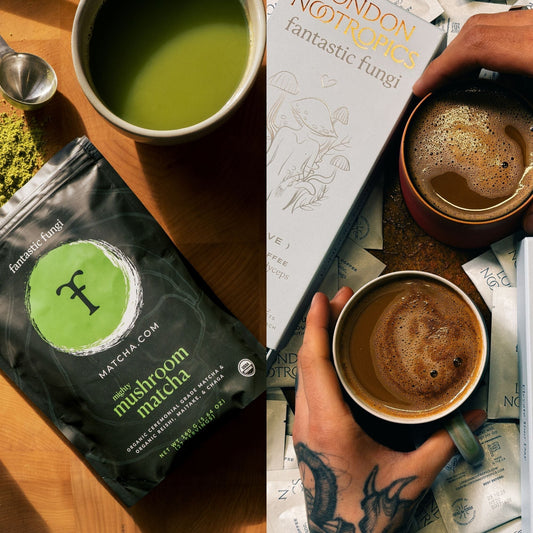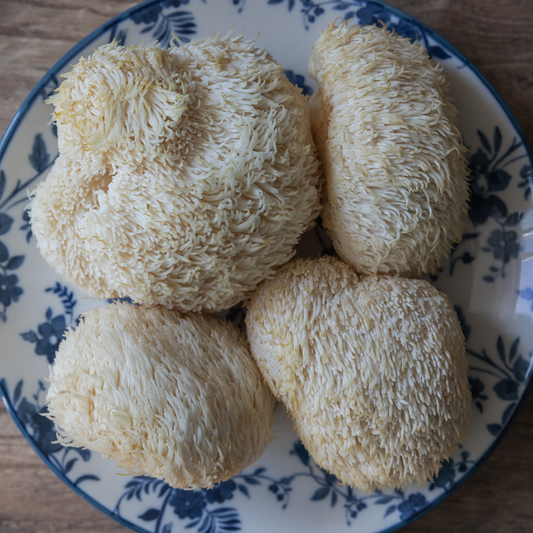
How to Incorporate Functional Mushrooms Into Your Daily Routines
Mushrooms are our allies, and if you’ve seen the film, you know how wide-spread the mycelial network truly is. Mushrooms support mind, body and spirit.* They create community and connect us to nature. They have potential to help us build a better future. And they’re simply delicious and nutritious as a food source.
Integrating the benefits of mushrooms into your daily routines can be as simple as snacking on mushroom jerky, sipping on a Chaga chai latte or swapping in Lion’s Mane for the seafood in your favorite recipe.* But there are plenty of other ways to bring them into your everyday life. Mushrooms seem enigmatic and mysterious at first – but they don’t have to be.
Read on to learn the difference between functional mushrooms and culinary ones. Then get our 15 best (simple!) tips for connecting with nature’s intelligence through fungi while balancing your busy modern life.
Functional mushrooms vs. culinary mushrooms
Edible species of mushrooms offer benefits that support overall health and well-being.* From the mundane to the mysterious, mushrooms provide nutritional benefits.*
They’re low in calories and provide essential vitamins and minerals. Mushrooms are also a source of protein and B vitamins, which help provide energy to the body. They contain the mineral selenium, which offers antioxidant properties.* And they contain some vitamin D – certain varieties, including Shiitake, possess the ability to deliver more if they are exposed to UV light or sunlight! (This is especially helpful for plant-based eaters to know, since most sources of vitamin D are animal-based.)
Mushrooms also contain a type of complex carbohydrates called beta-glucans. Found in the cell walls of fungi, beta-glucans are the substances in mushrooms that have been most widely studied in connection with wellness and immune health.*
Since beta-glucans are locked into cell walls, we need to break them down to access all their goodness! That’s why so many dense, firm mushrooms (like Reishi, Turkey Tail and Chaga) are extracted. It’s also a major reason why we always cook mushrooms before eating them. Mushrooms like Shiitake and Lion’s Mane are tender enough to be cooked and eaten, but they are also functional – promoting health and well-being in their own right.*
We tend to call mushrooms “functional” when their benefits outweigh their flavor, but plenty of delicious mushrooms have also been studied for their roles in supporting health.* You’ll see mushrooms labeled as “functional” when they’re added to foods where you don’t typically think you’ll find them (such as teas or chocolate) or when they’re used in supplement form. But most of those same mushrooms can also be cooked and added to your meals and snacks.
15 tips for bringing mushrooms into your daily routines and rituals
Try these simple tips to help you create connections with mushrooms in your everyday life.
- Finely chop mushrooms and use them to replace at least half of the ground meat in burgers, tacos, meatloaf, etc. (Sauté them first for extra flavor and to remove moisture.)
- Swap your usual cup of coffee for a mushroom-fortified brew.
- Sip on tea infused with mushrooms and other botanicals. Add your favorite plant milk if you prefer.
- Snack on mushroom jerky. Mix it into your favorite trail mix or pack it on your next hike.
- Seek out new-to-you mushrooms at your local farmers market. Ask the grower for their favorite cooking tips.
- Make mushroom tinctures part of your A.M. or P.M. routine, depending on your goals. Reishi is a wonderful ally at bedtime, while Cordyceps can be supportive in the mornings or afternoons.*
- Add powdered mushroom extracts to smoothies, energy bites or no-bake granola bars.
- Stir those same mushroom powders into your morning oatmeal.
- Savor a square of dark chocolate with added mushrooms.
- Sauté your favorite mushrooms (such as Oysters, Shiitake, Maitake or Portabellas) and serve them as a simple side dish at any meal.
- Grind dried mushrooms in a food processor, along with dried herbs and spices. Place the mixture in a jar with a tight-fitting lid. Add a spoonful to soups, stews and sauces as they simmer for extra umami.
- Add dried mushrooms to the pot when you cook whole grains and legumes.
- Meditate among the mushrooms. The Forager Box includes exclusive digital content (including meditations) that brings mushrooms to life in a transformative way.
- Sketch the mushrooms you encounter. Or unwind with an adult coloring book that explores the beauty of fungi.
- Turn the experience of taking mushroom supplements into a sensory meditation. Focus on the taste, smell and sensation, then journal about your experience.
Photo by Evan Sung.
